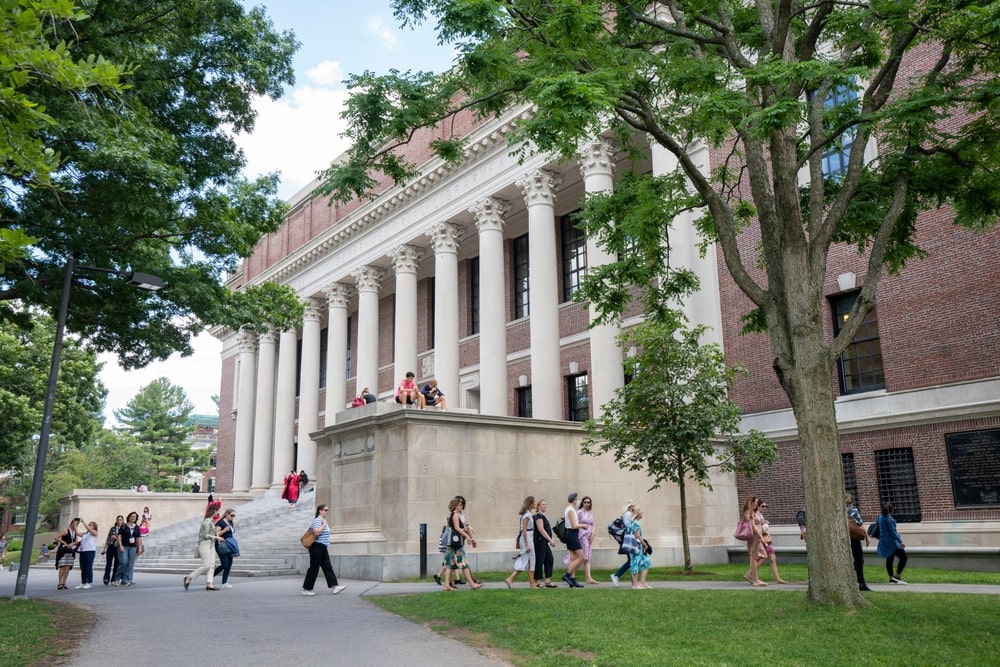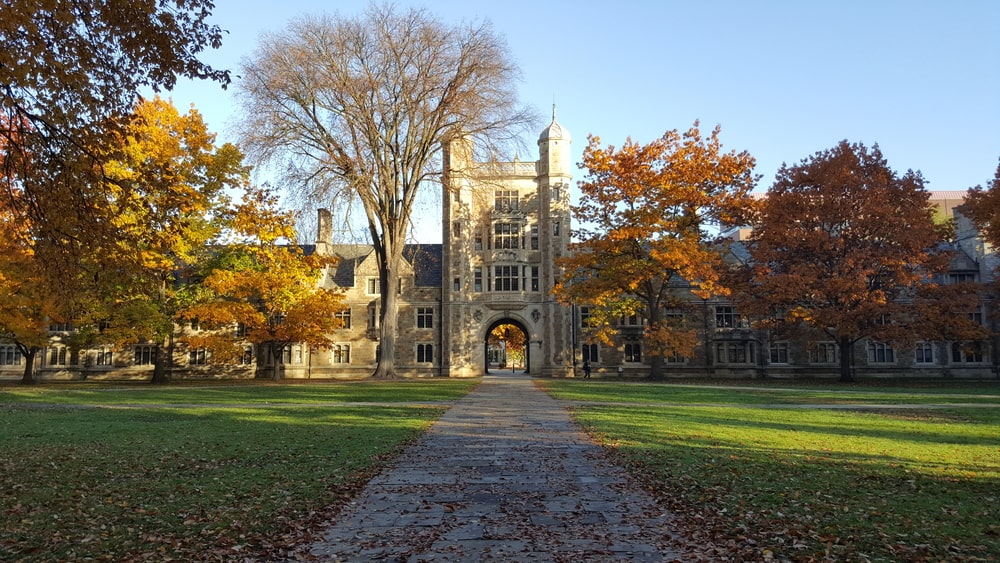What is legacy admission? 4 things you should know

www.degreechoices.com is an advertising-supported site. Featured or trusted partner programs and all school search, finder, or match results are for schools that compensate us. This compensation does not influence our school rankings, resource guides, or other editorially-independent information published on this site.
Legacy admission is the practice of colleges giving preferential treatment to the children of its alumni in admissions decisions.
It has faced growing criticism in recent years, especially following the 2023 Supreme Court decision in Students for Fair Admissions v. Harvard University and SFFA v. University of North Carolina, which essentially ended the practice of race-conscious admissions at selective institutions.
That ruling highlighted what many observers regard as an obvious double standard – prohibiting policies that give an edge to underrepresented minority students while at the same time permitting legacy preferences that primarily benefit white students who tend to come from affluent backgrounds.
Now, we have new legacy admissions statistics that provide detailed information about how many and what kinds of institutions use legacy preferences. How widespread is the practice? What are its consequences? How strong is the momentum to end it? This article summarizes what we know.
1. The use of legacy preferences is widespread, but declining
In 2022, a report prepared by Education Reform Now (ERN) that relied on data from the Common Data Set found that 787 colleges and universities applied some type of legacy preference in 2020, equal to about half of the 4-year institutions completing the Common Data Set.
However, the practice was much more common at highly selective admissions colleges; 80% of the 64 4-year colleges and universities that admit less than 25% of applicants reported giving an advantage to the children of alumni.
An update by ERN released in December of 2023 found a substantial decline in legacy admissions practices. Using recent figures from the National Center for Education Statistic’s Integrated Postsecondary Education Data System (IPEDS), which assessed whether a college or university considered legacy status, ERN determined that 497 of 1,771 (28%) public and private, not-for-profit 4-year colleges in the United States consider legacy status in their admissions process.
Between 2015 and 2022, more than 100 colleges claim they have stopped considering legacy status in their admissions decisions, including such prominent institutions as Texas A & M University, Purdue University, the California Institute of Technology, Johns Hopkins University, and Amherst College.
2. Some public schools use legacy admissions too
While highly selective schools are the most likely to use legacy preferences, legacy admissions are not confined to the Ivy League and other elite colleges. According to ERN:
- About 13% of public institutions give the relatives of alumni an admissions advantage, compared to 35% of private colleges and universities.
- A majority of the most selective colleges (58%) continue to consider legacy status, but that number has dropped significantly. In ERN’s earlier report, 75% of the most selective colleges gave an admissions bump to legacies.
- Legacy preferences are more common for institutions on the East Coast and in the Northeast. As ERN points out, this is due to the larger number of older, private colleges located there. For example, 50% of schools in Vermont and 47% of those in Maine extend legacy advantages, while only 19% in Washington and 14% in Oregon do so.
» Also read: Public vs private schools, which is a better deal?
3. Legacy preference may boost an applicant’s chances 45%
Generally, institutions do not publicize their admission results broken down by legacy status. However, taking a close look at available data can give a rough idea of how much the legacy factor can help applicants.
At many schools retaining a legacy preference, most students who apply are accepted regardless of the advantage. According to an analysis by the Chronicle of Higher Education, about two-thirds of the colleges with legacy admissions accepted 50% or more of students applying in fall, 2022; included in that group were 30 institutions that accepted everyone who applied.
One study, cited in the ERN report, found that legacy preferences boosted an applicant’s chance of admission as much as increasing their SAT score by 160 points would. Another, analyzing data from 30 colleges, found that being a legacy improved an applicant’s chances by 45%.
» Also read: The best colleges for low-income students
Briefs submitted to the Supreme Court as part of the Students for Fair Admissions v. Harvard University litigation suggested that children of Harvard alumni are almost 6 times more likely to be admitted to Harvard than the rest of the pool, but interpret that number with caution because it’s possible, even likely, that the children of alums have stronger academic records than other applicants.
The best research on the strength of the legacy advantage comes from research by Opportunity Insights conducted by a team of economists working at Ivy League Institutions.
When they examined what are known as the “Ivy Plus” institutions – the Ivy League schools plus Stanford, Duke, the University of Chicago, and MIT (which does not use legacy preferences) – they discovered the following:
- Children of alumni were nearly 4 times more likely to be admitted to an Ivy Plus school than non-legacy applicants with the same test scores. This advantage grows to almost 5 times greater for legacies from the richest 1% of households.
- When legacy applicants applied to more than 1 Ivy Plus college, they were 3 times more likely to get into the institution one of their parents attended.
- Legacy applicants from the richest 1% of households are 50% more likely to get into their parents’ alma mater than legacy applicants from the bottom 95% income bracket.
4. Efforts to end or curtail legacy admissions are increasing
The practice of giving admission preference to legacy applicants has a long history, extending back to the 1920s, when some colleges began to use it as a backdoor strategy for limiting the number of Jewish, minority and immigrant students by giving preference to alumni’s children (who were seldom Jewish, people of color or immigrants).
The practice has now mutated into one aimed not so much as deliberately excluding such groups, but instead intentionally giving advantages to applicants whom schools want to favor because they believe they will do well academically and/or will increase private donations from grateful families.
Regardless of the motive, legacy admissions are coming under increased scrutiny.
The U.S. Department of Education has initiated a civil rights investigation into Harvard University’s use of legacy and donor preferences in its admission decisions. Revealed in a letter from the department to the nonprofit Lawyers for Civil Rights, the feds will investigate “whether the University discriminates on the basis of race by using donor and legacy preferences in its undergraduate admissions process.”
» Also read: How colleges are dealing with the race-conscious admissions ban
States are also beginning to take legislative action against legacy preferences. California passed a law requiring colleges to report if they have a legacy admissions policy. Colorado became the first state to ban its public universities from giving legacy preferences. Massachusetts, New York, Connecticut, and Pennsylvania are also considering anti-legacy legislation.
At the federal level, bipartisan concerns about legacy admissions have emerged. Senator Jeff Merkley (D-OR) and Representative Jamaal Bowman (D-NY) have introduced the Fair College Admissions for Students Act, and Senator Todd Young (R-IN) and Senator Tim Kaine (D-VA) introduced the MERIT Act, which would amend the Higher Education Act by adding a new standard for accreditation that would prevent accredited colleges and universities from giving “preferential treatment” during the admissions process.
“America is a land of opportunity, not a land of aristocracy,” said Senator Young. “Legacy admissions restrict opportunities for many bright and talented young Americans and provide unmerited advantage to the most connected individuals in our society. Our bill will end legacy preferences in the admissions process and promote upward mobility for Americans of all backgrounds.”
Final thoughts
Besides appearing fundamentally unfair, legacy admission preferences – particularly at highly selective colleges – is a problem because these schools accept so few qualified students to begin with. They give a boost to students who generally don’t need it, undermining their claims to be devoted to notions of merit, equality, and social mobility.
Although a college’s decision to end legacy admissions might anger some alumni and occasionally cause them to withhold a donation or discourage their children from applying, schools that have done away with this kind of “affirmative action” for the children of alumni have not generally suffered.
They’ve done the right thing. Now, more colleges need to follow their lead and end a practice increasingly recognized for causing more harm than good.
www.degreechoices.com is an advertising-supported site. Featured or trusted partner programs and all school search, finder, or match results are for schools that compensate us. This compensation does not influence our school rankings, resource guides, or other editorially-independent information published on this site.





